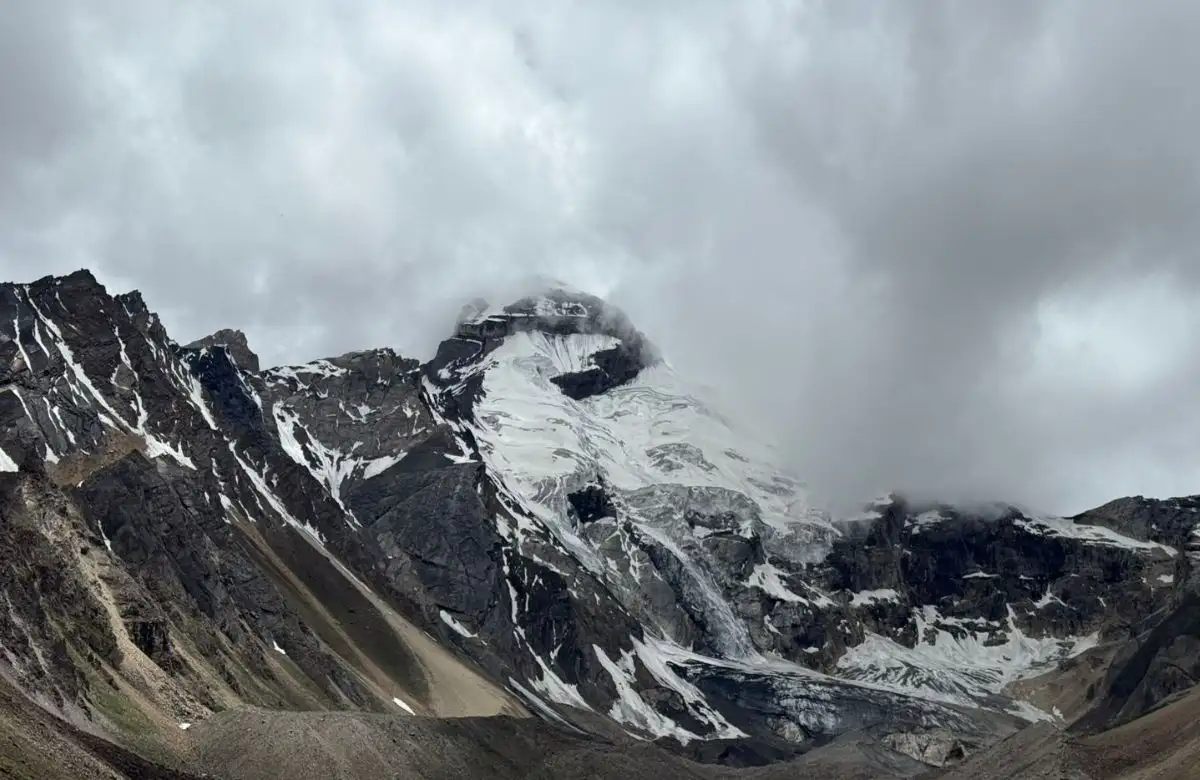Best Time to Visit Adi Kailash and Om Parvat: A Complete Seasonal Travel Guide

Get in touch with our Staff members and get discounted offers for your trip.


The sacred journey to Adi Kailash and Om Parvat, nestled in the pristine Himalayan region of Uttarakhand, is not only a spiritual experience but also a profound adventure. Known as Chhota Kailash, Adi Kailash holds immense religious significance as it is considered the earthly abode of Lord Shiva, while Om Parvat is revered for the naturally formed ‘ॐ’ symbol on its snowy face — a miraculous sight that attracts both devotees and travelers alike.
If you're planning this divine yatra, timing is everything. The extreme terrain and unpredictable weather conditions mean that the region is open to pilgrims and trekkers only during specific months. This article guides you through the best time to visit Adi Kailash and Om Parvat, with detailed insights into seasonal conditions, weather, accessibility, and travel tips.
The pilgrimage route to Adi Kailash and Om Parvat is accessible for a limited window each year — generally from mid-May to October. Within this range, some months are better suited for travel depending on your purpose — whether it’s religious pilgrimage, trekking, or photography.
Overview: May marks the beginning of the yatra season. With the snow beginning to melt, roads reopen after winter closure, and the valleys slowly come to life. This period is ideal for those who want to avoid the monsoon and witness snow-covered peaks.
Weather:
Temperature: 5°C to 15°C during the day
Cold nights, especially at high-altitude halts like Nabi and Gunji
Clear skies with good visibility of the peaks
Why Visit in May-June:
Early darshan of Adi Kailash and Om Parvat with fresh snow still lingering
Lush green valleys begin to bloom
Fewer crowds compared to peak season
Things to Note:
Cold winds are common; layered clothing is necessary
Some high-altitude roads may be rough due to post-winter conditions
Overview: The region experiences heavy monsoon rainfall, especially in lower and mid-altitudes like Dharchula and Tawaghat. Landslides and road blockages are common, making travel risky.
Weather:
Unpredictable rains and slippery terrain
Cloudy skies can obstruct views of Om Parvat and Adi Kailash
Risk of flooding in valleys and landslides in hilly sections
Why Avoid:
Unsafe roads and high chances of delays or cancellations
Darshan may be obscured by clouds and mist
Limited accessibility to remote villages and homestays
Overview: This is considered the best time to visit Adi Kailash and Om Parvat. The weather is stable, the air is crisp, and the skies are crystal clear — offering perfect conditions for darshan, trekking, and photography.
Weather:
Day temperature: 10°C to 18°C
Nights remain chilly
Clear mountain views with vibrant post-monsoon landscapes
Why Visit in September-October:
Best visibility for Om symbol on the Parvat
Comfortable travel conditions and safer roads
The valleys are lush after monsoon, offering scenic beauty
Ideal for spiritual and nature enthusiasts alike
Things to Note:
The season ends by mid to late October due to onset of winter
Start your trip early in October to avoid sudden snowfall
Overview: The entire Adi Kailash region remains cut off due to heavy snowfall. The routes to Gunji, Nabi, and Jyolingkong are inaccessible. The area is officially closed for visitors.
Weather:
Temperature can drop below -10°C
High-altitude passes are snowbound
Dangerous weather with blizzards in higher regions
Why Avoid:
Extreme cold and complete inaccessibility
No government or private tours operate
Local homestays are shut; even locals migrate to lower villages
To reach Adi Kailash and Om Parvat, travelers must first reach Dharchula in the Pithoragarh district. From there, journeys continue toward Gunji/Nabi via ITBP and Inner Line Permit routes. The final darshan points — Jyolingkong (Adi Kailash) and Om Parvat View Point — require a mix of road travel and short treks or drives, depending on the route.
Inner Line Permit (ILP) is mandatory for Indian nationals, as the region is close to the Indo-China border. Apply in advance through official channels or registered travel agencies.
Always travel with an experienced registered tour operator recognized by Uttarakhand Tourism for safety, permits, and logistics.
Carry medicines for altitude sickness, cold, and minor injuries.
Layered clothing, trekking shoes, and high-calorie snacks are essential.
Avoid traveling during the monsoon, and keep a buffer day or two in your plan in case of delays.
| Season | Months | Travel Suitability | Highlights |
|---|---|---|---|
| Spring/Summer | May to June | ✔️ Good | Fresh snow, early darshan, fewer crowds |
| Monsoon | July to Mid-Sep | ❌ Avoid | High risk of landslides and road closures |
| Autumn | Mid-Sep to Oct | ⭐ Best | Clear skies, best visibility, peak season |
| Winter | Nov to April | ❌ Closed | Region inaccessible due to snowfall |
The journey to Adi Kailash and Om Parvat is not just about the destination — it’s about the transformation that comes along the way. For a smooth, spiritually enriching, and visually stunning experience, plan your trip during the May–June or September–October windows. These are the most favorable months for darshan, scenic landscapes, and safe travel conditions.
Whether you’re a seeker of Shiva’s divine presence or a lover of the Himalayas’ untouched beauty, visiting Adi Kailash and Om Parvat at the right time will make your yatra truly unforgettable.